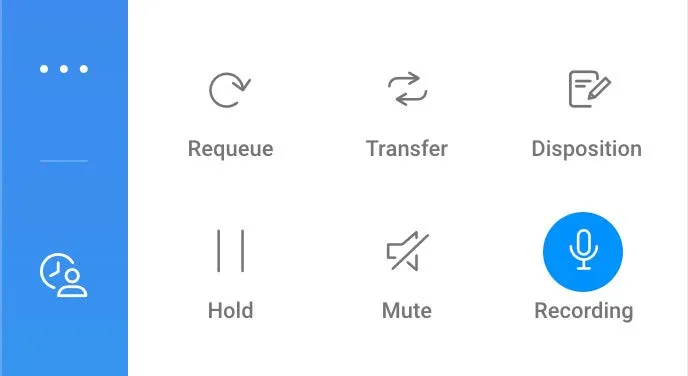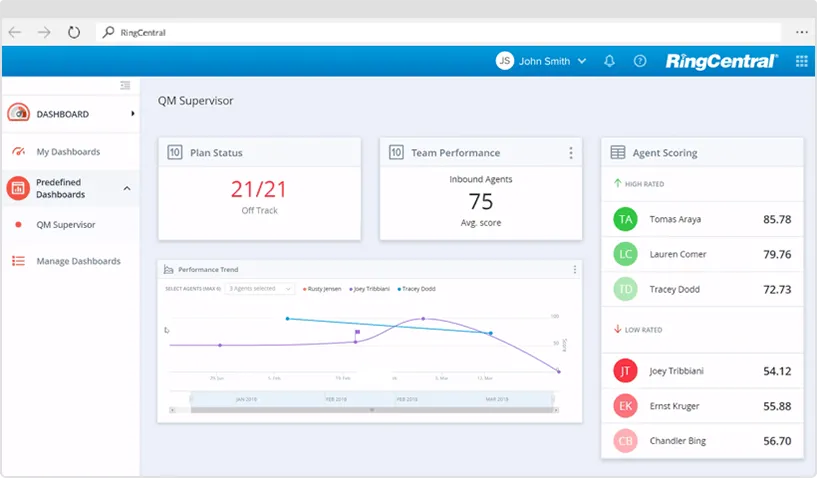
There are so many customer service platforms on the market. They can have a huge impact on large or small businesses and vastly improve customer service. Choosing the right customer service platform, though, can be hard. This guide will assist you in making that decision and improving your customer communications.
- What are the 3 most important aspects of customer service?
- What are the 3 types of customer service?
- What are the different types of customer service channels?
- How to improve customer experiences
- The main types of customer support software
- Benefits of customer service software
- Customers will have more confidence in your business
- Provide more responsive, more consistent support.
- Providing customer assistance 24 hours a day
- Increase customer service productivity
- Improve efficiencies
- Easier communication with coworkers and customers
- Analyze data and make reports
- Gather customer insights.
- Lower operational costs
- Scale up your service.
- How to choose the best customer service software for your business
What are the 3 most important aspects of customer service?
Customer service is all about taking care of the needs of every customer to keep them happy and satisfied with your brand. It involves a lot of processes, including complaint management.
Good customer service is vital. It's mostly the only way customers can connect with a company. There are three most important aspects of customer service that you need to know about:
- Empathy
Empathy is the ability to understand another person’s emotions and points of view. For customers, being treated with empathy is as important as getting the right answers to their questions. Customer service is not only about whether a problem was solved or a refund was offered. It's also about how the customer feels they've been treated.
- Good time management
No one wants to wait around, and customers certainly don't expect to be delayed. A slow service can make a business immediately lose customers. Make quick response times a priority.
Streamline systems so updating customer information and reporting is quick and easy. And make sure customer service agents have plenty of time in the day to complete their tasks. Don't make them choose between helping clients and fulfilling their other responsibilities. - Supporting customers in their preferred way
Customers expect good service, and these days they want it on their own terms. Any business needs to interact with consumers in their preferred method. This generally means supporting a multiple channel customer service strategy.
Get to know customer stories in order to improve customer engagement. Excellent customer care service comes from customer communications feeling personal. Communications should be on the customer’s own terms, not the company’s.
What are the 3 types of customer service?
Before the digital age, customer service was primarily done in person. Customers would walk into a business and chat face-to-face with a customer service rep. The other option was of course talking to customers and assisting them over the phone. But with all the technological advancements, there are more options when it comes to customer service. We’re looking at a more digital customer relationship management approach.
What are the different types of customer service channels?
Within those three general categories, there is a wide range of different communication channels.
Live chat
Live chat is an essential tool when it comes to customer service platforms. Messaging has risen to prominence more recently. As have chatbots, which provide a service similar to live chat, just without the agent!
Phone calls
Even despite the world going more digital, phone calls are still very popular. It's an especially important channel for high-stakes issues. That’s why the most successful businesses operate contact centers with advanced telephone systems.
Email is an asynchronous form of communication. It’s useful for customers that don’t necessarily require immediate response to their concerns. With this, customer support representatives can have enough time to analyze the issue and find the most suitable answer before they give a reply to the customer’s email.
Knowledge bases
A knowledge base is an online resource center of information. It’s like a self-service portal that customers can use to get answers to general questions about company products and services. By allowing customers to resolve simple matters themselves, support teams can focus more on complex cases.
Messaging apps
Today, many customers use different messaging applications for personal and business purposes. Through these apps, it has become easier and more convenient for customers to reach out to companies whenever they need help. By integrating with popular messaging apps, businesses can improve customer experience and allow customers to interact with the brand the way they do with family and friends.
There are, of course, more than just those five customer service channels—there’s all the various social media platforms, for example. With today’s customers increasingly expecting an omnichannel experience, businesses should explore all the avenues they can. Get customer service right across the five mentioned, though, and it gives you the ideal foundation to build upon to improve customer experience. Speaking of which...
How to improve customer experiences
There are many ways to improve customer satisfaction, but there are a few surefire things that can make a big difference:
- Provide multichannel support
- Get to know what your customers want
- Understand the customer journey
- Actively seek feedback in order to make improvements
- Measure the ROI from delivering a great customer experience
- Use a customer service platform to manage and streamline correspondence
The main types of customer support software
Customer support software helps to automate workflows and provide excellent customer service. It allows agents to provide real-time support and resolve issues quickly. It can also give assistance in other ways, around the clock. There are a few different customer service software categories that can help a business of any size.
Support software ticketing system
A ticket system is useful in sorting customer requests and addressing them by priority. Effective ticket management is crucial, so the system should be user-friendly for support agents and supervisors to navigate easily. It’s important that customer service representatives properly store records of previous interactions with each customer. By doing so, they can better understand customer issues and resolve them faster.
Service desk software
This is specialist help desk software with additional features. Service desk software may contain ticketing capabilities, but also extends into strategic areas. This might include change requests, service configuration, and license management.

Messaging and chat systems
Live chat software is a very efficient way of managing customer issues in real-time. This can be done through social media, a mobile app, or with a live chat widget through your website. It’s then possible to offer a call if the issue cannot be resolved through chat.
Phone support software tools (including call center management systems)
Internet phone service has enabled many simple, fast phone support services.. It has also facilitated new forms of large call center systems. There are a few options to optimize the process, such as using software that offers automated routing. Another option is to allow customers to select a department after listening to a set of options.
There is call center software available that has many features for phone support such as:
- Call recording
- Smart internal routing
- Automatic ticket creation
- Access to the full customer history
- Inbound call routing

Customer relationship management (CRM) software
CRM software focuses on building and using a database of customer information. It is often used for sales and account management purposes. A CRM is generally used in conjunction with a collaborative shared inbox tool.
Knowledge base software
This a powerful tool to enable the sharing of information. Many customers prefer to self-serve by reading how-to articles or FAQs. This software helps capture, write, and publish the information needed. In this way, it enables a good customer self-service experience.
This option is only possible if customer service teams have tools to make knowledge creation and upkeep easy. For example, AI functionality can flag when content is out-of-date or when a new article topic is needed.
It’s even possible to integrate community forums in order to help your customers support each other.
Benefits of customer service software
There are many benefits to implementing the right customer service solution. It can have many significant advantages for any business.
A structured customer service platform will establish your business and support your customers. It tells buyers that you are intent on providing them as much valuable information as necessary, which increases their trust in your products and services. It will encourage them to look to you when they have an issue and need help. Customer support software will show you value your customers and increase your repeat purchases.
There are dedicated software features available to improve customer relationships. These give your team more time to spend helping customers and less fighting their tools. Some examples of these features are:
- Workflows
- Tagging
- Knowledge base integration
- Saved Replies
A customer support software system provides your customers with support at any time. Once provided with this option,they’re less likely to send emails or call for help throughout the day. If customers know that their answers can be easily found, they will be much happier, as they won’t have to wait.
There are lots of customer service software tools available for automation and workforce management. Whether it’s quality monitoring or an opportunity to improve efficiencies. They enable telephone calls to be handled in an efficient manner. They also boost overall agent productivity.
These solutions use AI and automation to streamline processes and increase efficiency. For example, support tickets are generated automatically, taking manual labor away from staff. Support agents can then focus on important issues, most notably providing a better service to customers. This will improve overall customer interactions.
Automated help desk software can simplify the work process and save more time. Increased efficiency means your customer support staff will receive less direct queries. Software can manage easier questions, leaving agents to focus on other important tasks.
Self-service software can communicate the answers to frequently asked questions. Overall, this system can improve communication between customers and help desk executives. It can also store customer information, allowing agents to easily view customer records. Many solutions have collaboration software, which enables staff to work together more efficiently.
Customer service software reduces duplicated work and keeps track of customer questions. It allows coordinated responses across multiple teams, and agents can deliver up-to-date answers.
Use the built-in reporting features and API access of customer service software. It can help to understand many metrics such as:
- Changes in support volume
- Customer support team productivity
- Type and size of customer

Software solutions can identify, collect, and organize all the helpful feedback received. It can manage feature requests, bug reports, and use cases. They can then be used to improve your service instead of being lost in the inbox forever.
A customer support solution will lower your operational costs. It will significantly decrease the number of help desk executives needed. This will result in lower expenditure on salaries and personnel expenses.
Software can help to maintain high-quality service as your business grows. Using tools can help with:
- Coordinating multiple teams of agents to support a growing customer base
- Using organizational features
- Utilizing automation
- Integrating with other tools

How to choose the best customer service software for your business
Which platform you choose will largely be based on the requirements of your business. But there are some key features you should look for. Consider asking the following questions regarding the options available to you:
- Does it have collaboration tools?
- Are the analytics and reporting tools sufficient?
- Is it customizable to your company?
- Will it scale as your business grows?
- How will it affect your current workflow?
- Does it have multichannel support?
- Does it contain an automated customer phone system?
- Will it improve response times?
- Will it help to streamline your processes?
- What advanced features are available?
There are many common features available, but if you want to find the best software for your business, you should check out each solution carefully and learn more about the advanced features they offer.
If you’re currently using multiple applications, it’s better to look for a solution that has integrations with related software. RingCentral, for example, integrates with various applications such as Zendesk, Google, and Salesforce.
Aside from that, you should also consider pricing options and how they fit with your budget. You may also wish to look at the buyers guide for each one and see if the solution is fit for purpose.

Want to learn if RingCentral is the right customer service platform for your business? Click on the View Demo button below to check out our features.